See Me: Pieces of Life from Youth In Care
First showcased at 2023 Roaring for Justice, "See Me" features artwork, interviews and artifacts representing the lived experiences of Georgia’s youth navigating the foster care system.
Paintings commissioned by Georgia Appleseed from youth in foster care are moving art pieces that tell their real stories. The artists describe their artwork with great emotion and insight.

“The world is just a pond, and we’re all ducks. And our actions just leave ripples in the pond.”
The world is just a pond, and we’re all ducks. And our actions just leave ripples in the pond. And as time goes on, things will either make better or they’ll, you know, go away. When I first got there, it’s not all sunshine and rainbows, you know, because, you know, people want to be with their family.
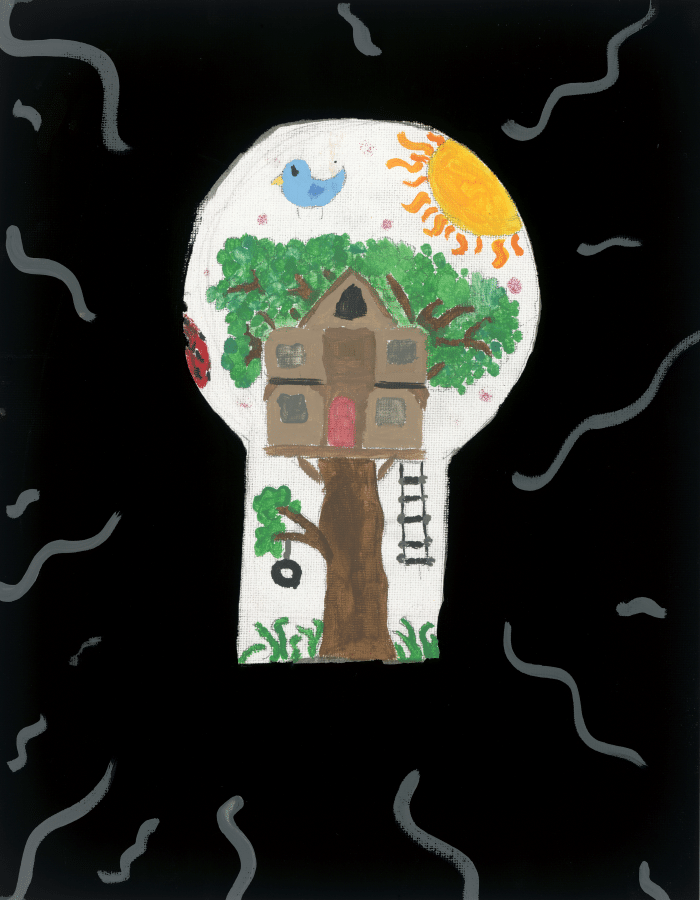
“I had all of my walls up so I couldn’t get hurt, and inside of the lock was bright and creative.”
When I first got into foster care I was scared to open up. I had all of my walls up so I couldn’t get hurt, and inside of the lock (AKA me) was bright and creative. I didn’t let anyone see that side of me. I want kids who are in foster care to know that it’s okay. You don’t have to have your guard up all the time. Show people the light that is within you.
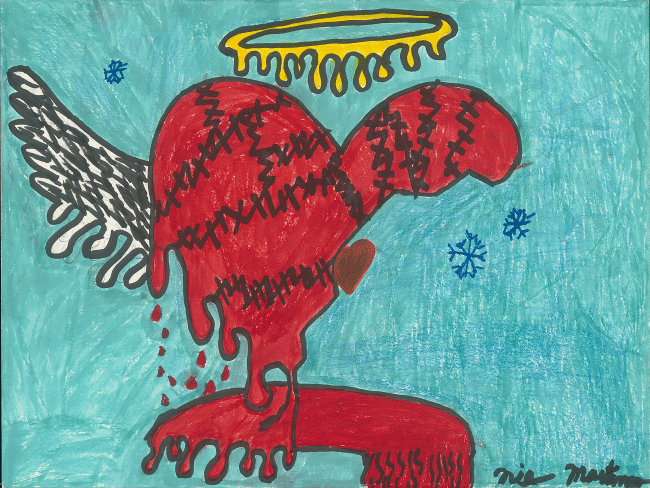
“Each line for the stitches, it shows how many people been in my life there and improve it.”
I feel like I’m missing a piece still, and that’s why there’s a big piece missing, because there’s a big part of me missing. I’m on my journey to find that. It’s a mystery. And the cracks with the little patches on that shows how many times my heart been broke, how many times I cried. Each line for the stitches, it shows how many people been in my life there and improve it.
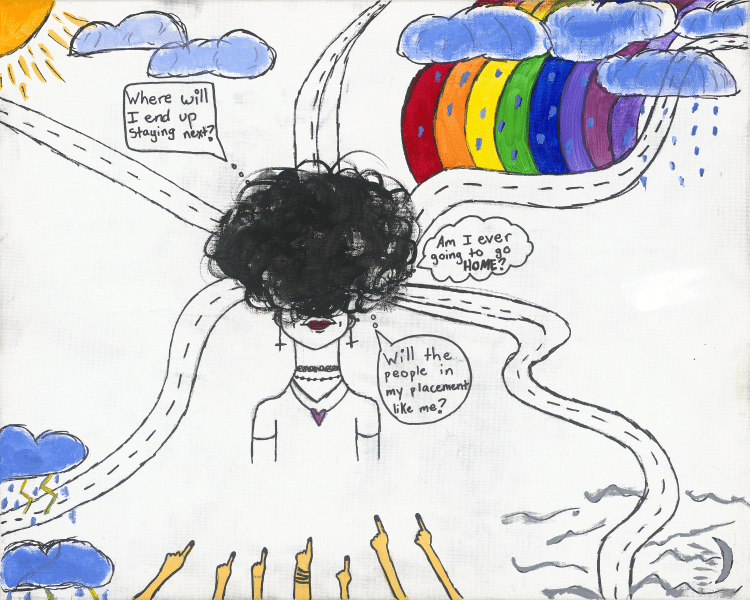
“I’m always questioning what’s gonna happen, and that there’s places I go everyday in my mind.”
I’m always questioning what’s gonna’ happen, and that there’s places I go everyday in my mind. My thoughts are always wandering. Foster care is a scary adventure. You never know what’s coming at you, so you have to be strong.

Healing My Heart, Anonymous
“Foster care gave me a ladder, just helped me. My heart was broken, but I’m slowly fixing it with the bandages.”
You know, my heart when I first got here…it was broken. I didn’t know what to do. Foster care, it kinda just gave me a ladder, just helped me. So, my painting is basically how my heart was broken, but I’m slowly fixing it with the bandages and everything. And, my heart – I didn’t want it to be like a regular heart, because it gotta be different. ‘Cause I’m different. I needed my heart to be yellow, because yellow is my favorite color. It’s very bright. Most people don’t like it, but I think it’s amazing. It’s bright like the sun, and that’s how I see myself.
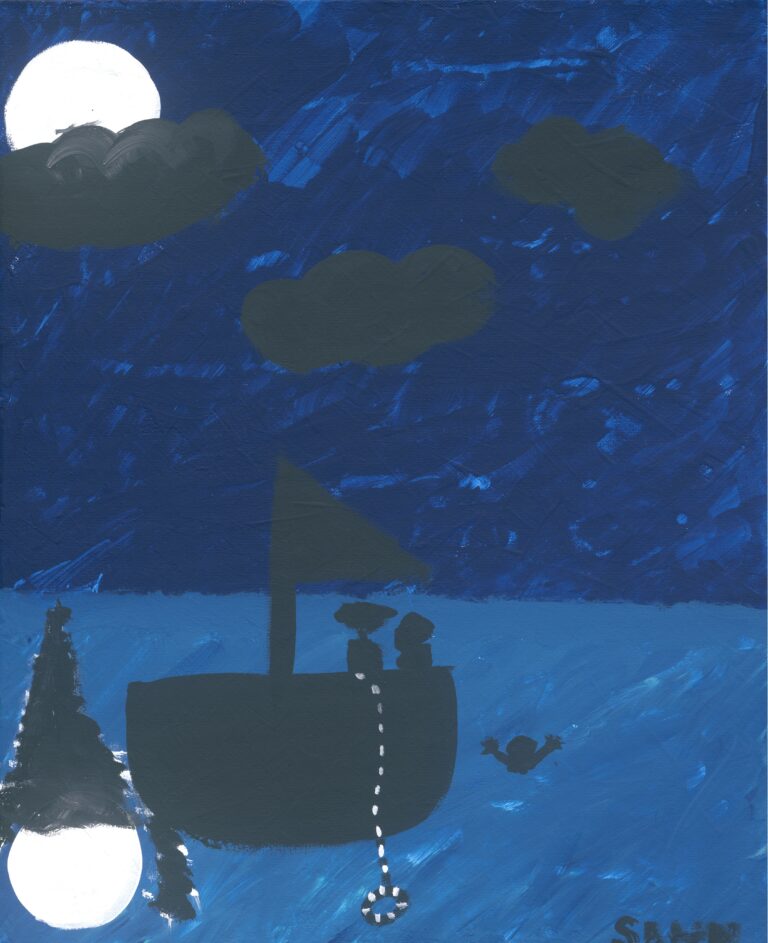
“That’s me. Right there. I’m basically drowning. And this lady – she’s not doing a thing.”
It’s a dark night and the moon is shining very brightly over everything, but the clouds are dark, and they’re blocking out the light. And there’s a reflection on the water where the moon is, and it’s reflecting the goodness, but it’s also reflecting the darkness that comes with it. That’s me. Right there. I’m basically drowning. And this lady right here – she’s looking at me, and she’s watching me suffer, and she’s not doing a thing. But this man right here, he saw me and cast out a little life saver boat, but the boat’s way over here, and I’m way over here. So, it’s not really doing much to help me, but I guess it shows that he tried. Yeah, I think most definitely this could be a lot of kids’ lives.
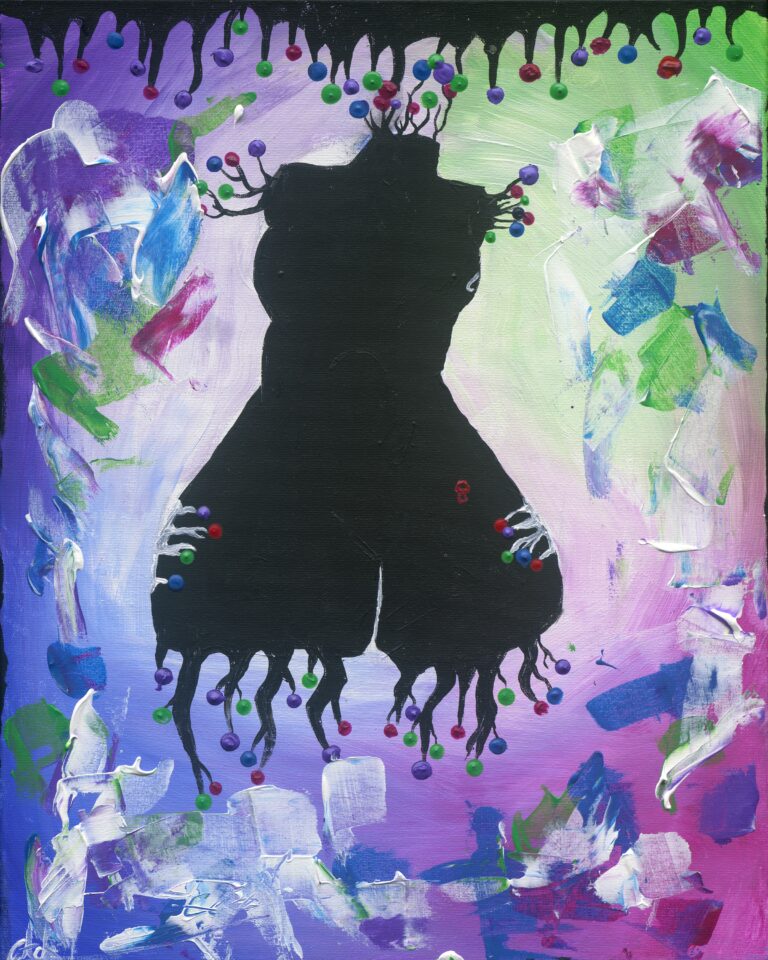
Growing, Kira Greer
“I thought I was struggling to find myself. It wasn’t me trying to find myself, it was me trying to grow.”
I first came into foster care with a lot of dark emotions . . . And I thought it was just a really dark place, and I wasn’t going to come out of this dark place until I’m 18. And then as I’m . . . finding all these new people that have similar stories as me . . . there is light and color in it. And also, when I came into care, I was very insecure about my body and I thought I was struggling to find myself. It wasn’t me trying to find myself, it was me trying to grow. And that’s why parts of it are resembling vines or flowers. It shows that I’m still growing as a person. And then all the color shows all the variety of people, all of the creative people that are out there that [aren’t] just bright, they are amazing. They just have hard stories and that they also need to realize they are still growing as well.
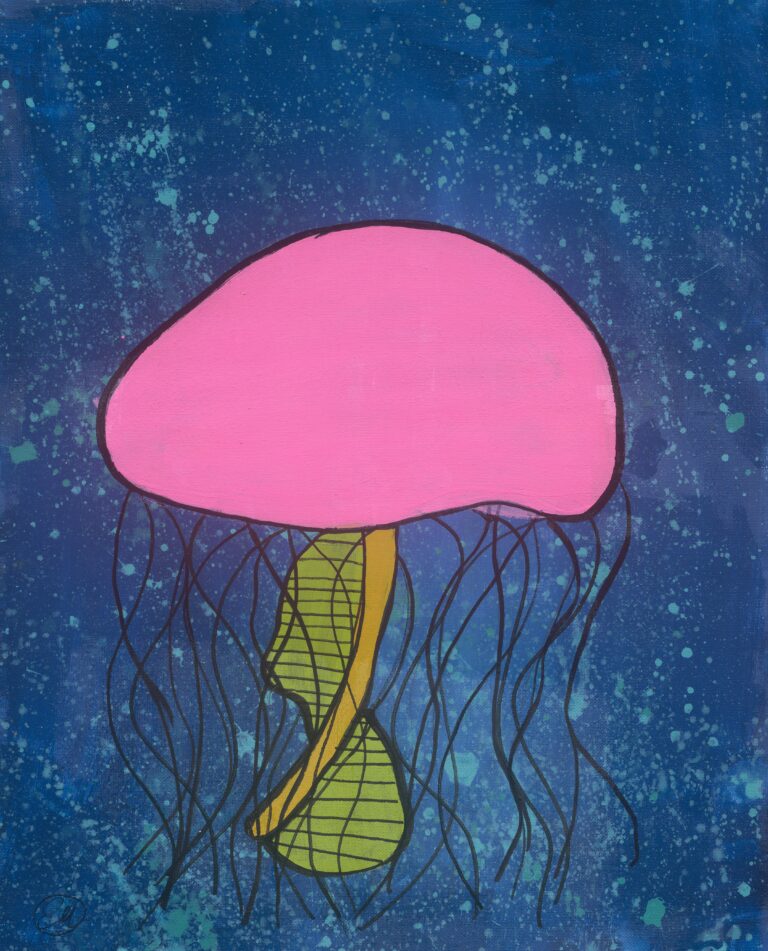
The Jellyfish, Anonymous
“Jellyfish are kinda cute . . . soft and squishy. But then other times, it can sting you.”
The message I was trying to present is like a jellyfish – when somebody sees a jellyfish, they’re like “Oh…no. That’s scary” – like they don’t like jellyfish. But jellyfish are kinda cute. At the top they’re really squishy, and they’re all soft and stuff. So when you first go into foster care everybody is trying to baby you – they’re soft and squishy and stuff. But then other times, like down here you see – the sting part – it can sting you. It can be hard, like when you first go into it, like I said it was scary, and sometimes it can be encouraging, there’s lots of opportunities and stuff. But then other times you’re away from your family, and things like that. And most of the time – well, not most of the time – some of the time, you’re not in the best of situations.
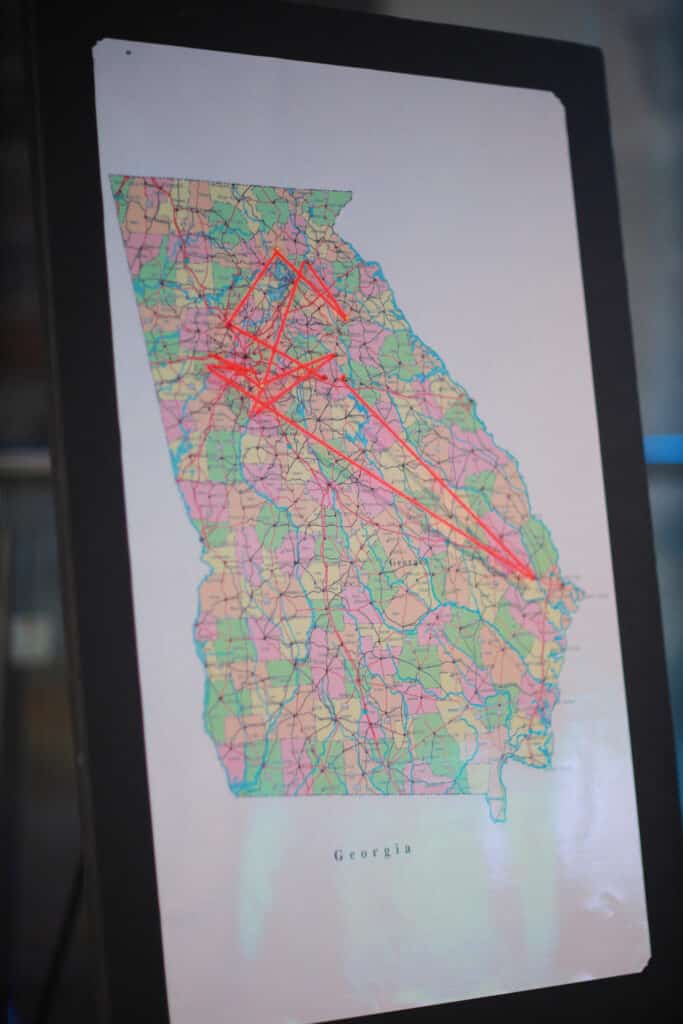
The lines on this map represent the 13-home placement moves of a single Georgia youth in foster care over 11 months.
This timeline shows 12 months of foster care for one of Georgia Appleseed’s clients – 5 schools, 5 caseworkers, and 7 moves. With each move, she must start over with new teachers, new mental and physical health providers, and new foster caregivers. Her timeline is representative of the turmoil that many of our clients’ experience.
Children and youth in Georgia’s foster care system move often, sometimes hundreds of miles from family. Frequent moves spark behavior challenges at home and school as kids cope. A damaging cycle emerges. Behavior challenges result in school discipline, often suspension or expulsion. In turn, suspensions exacerbate behavior and create new instability. Working foster parents cannot leave their jobs to care for homebound kids—and DFCS must find a new home. With each new home and school, the cycle repeats.
Georgia Appleseed breaks that cycle. In the last year, Georgia Appleseed provided legal services to 200+ children in care, in 69 counties. Case managers refer students to our School Justice Initiative when schools threaten long-term school suspension. We work with schools to reduce suspensions (122 school days on average per student), and marshal education and behavioral supports to disrupt the cycle.

